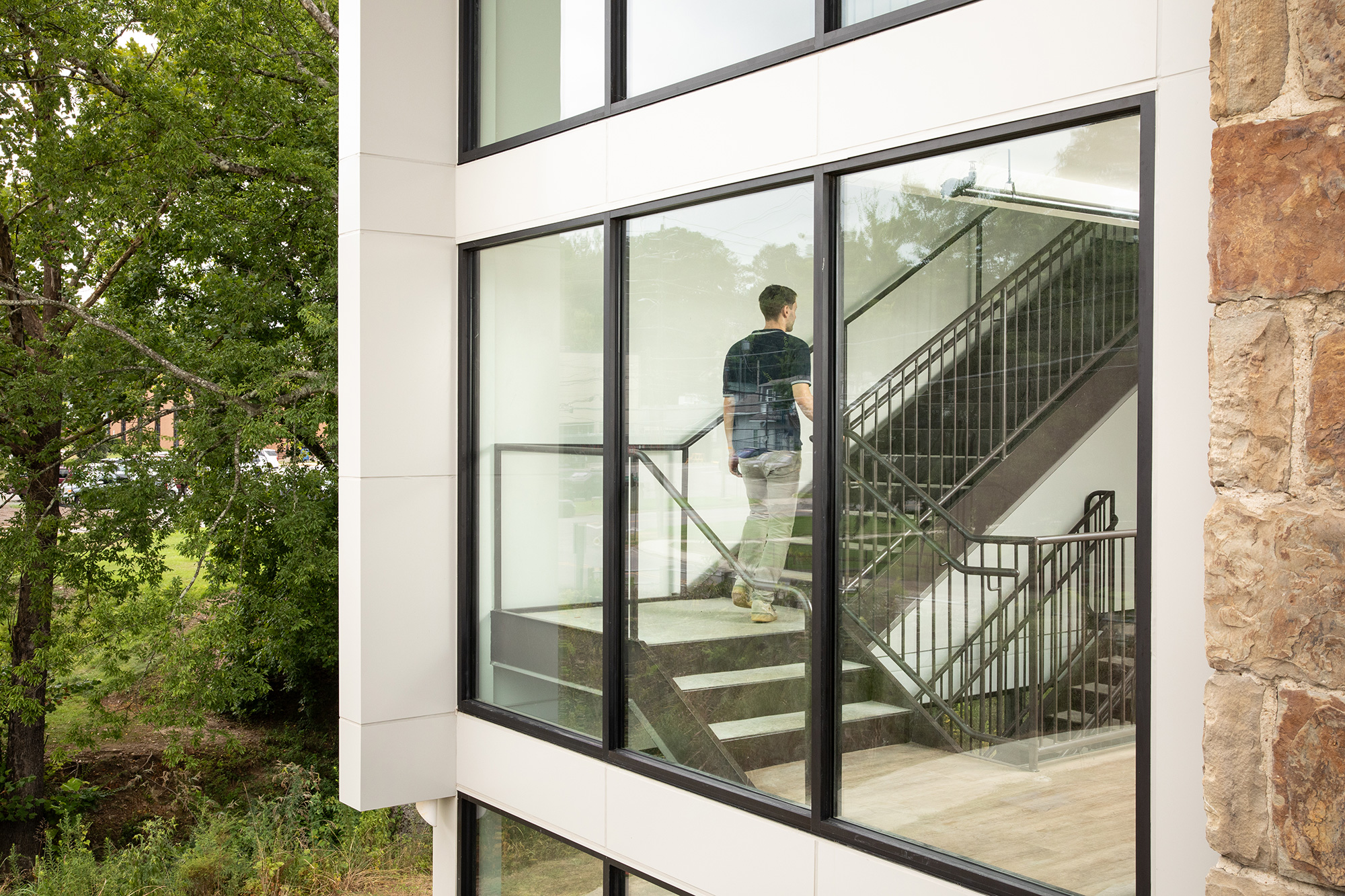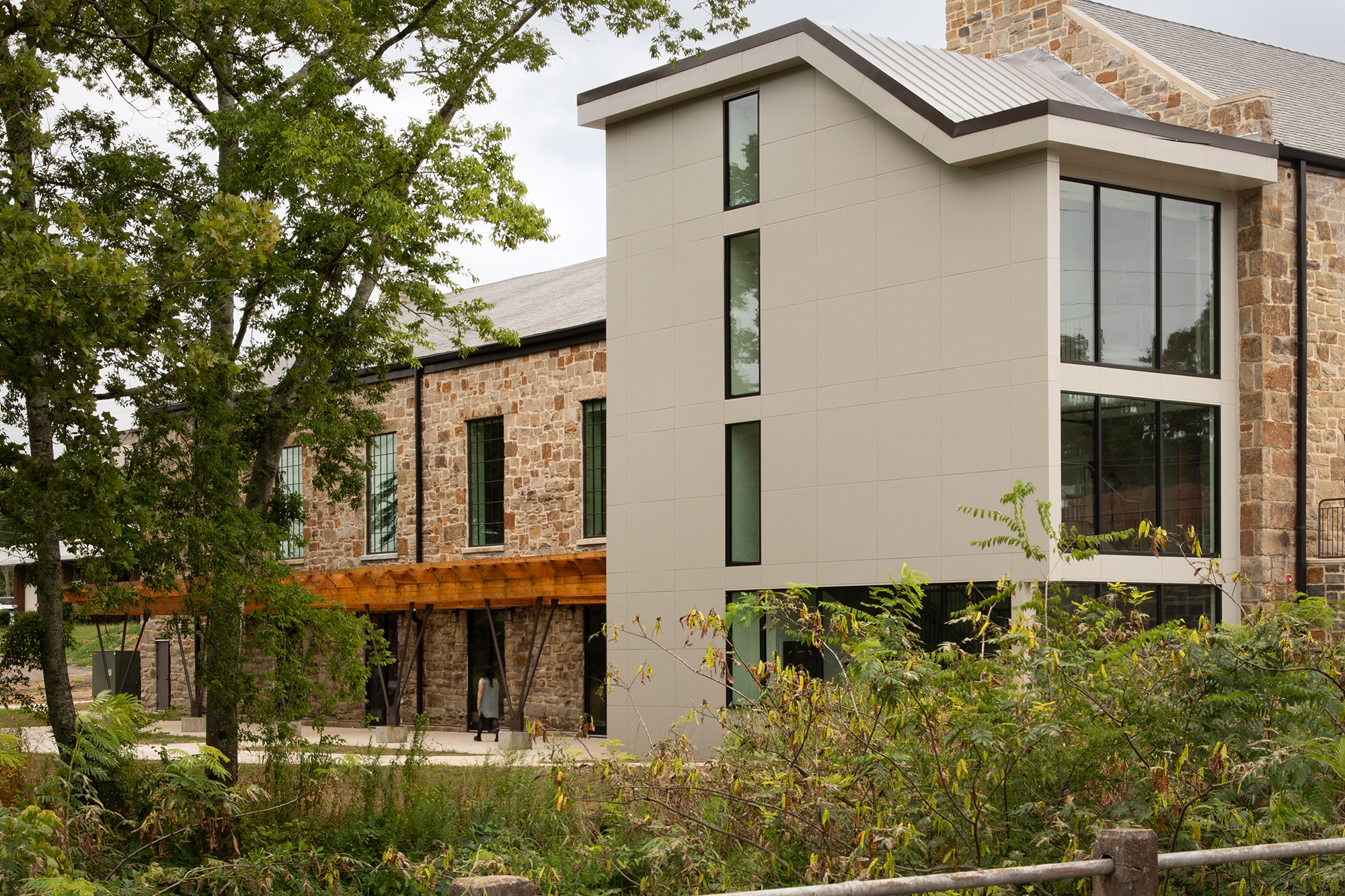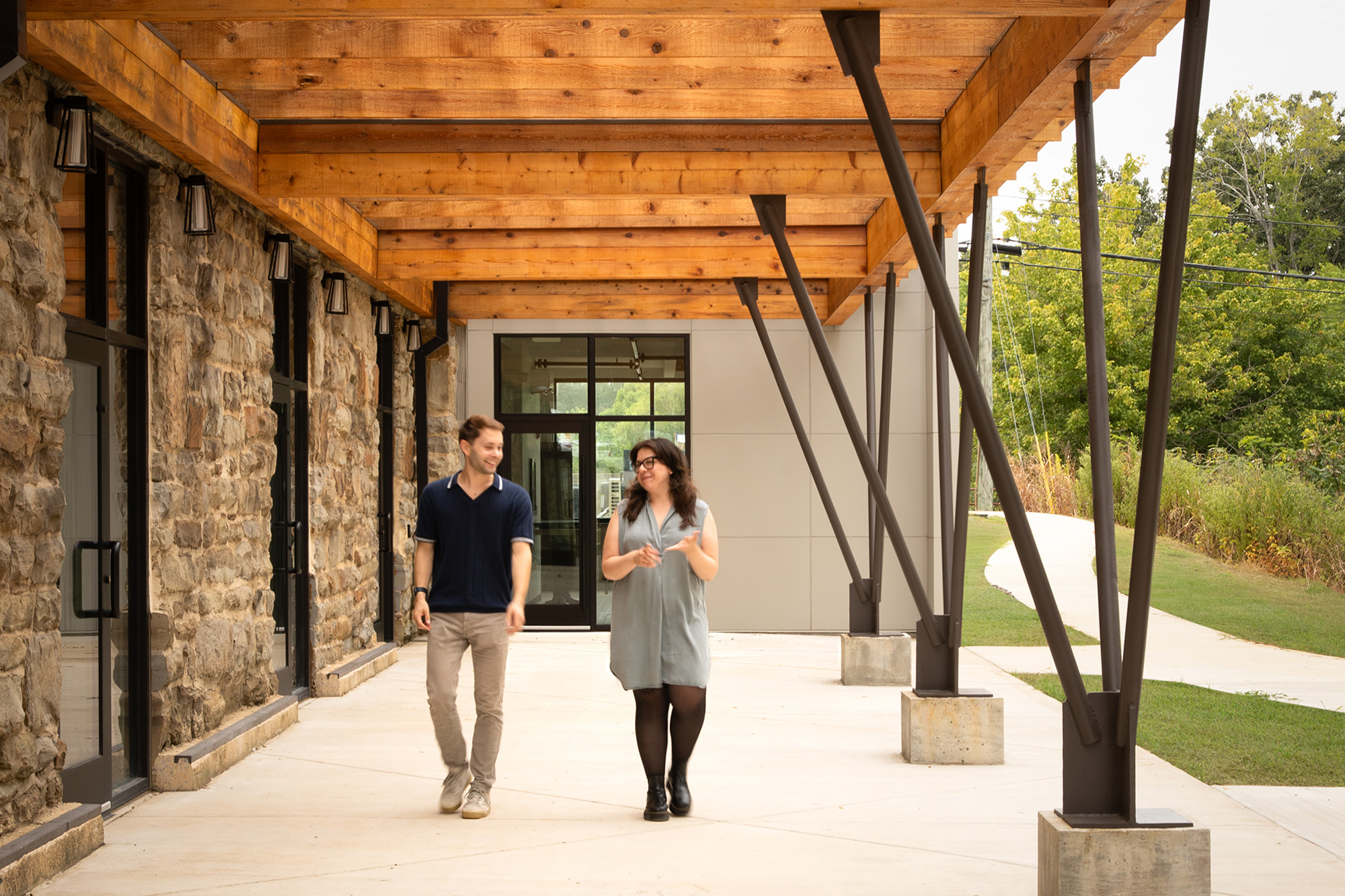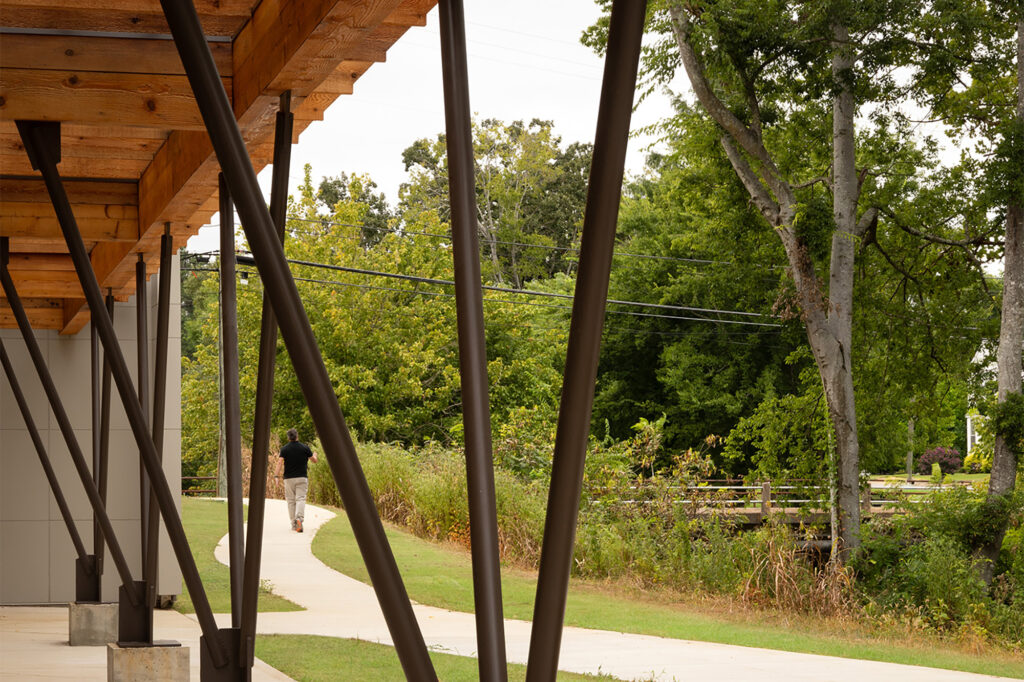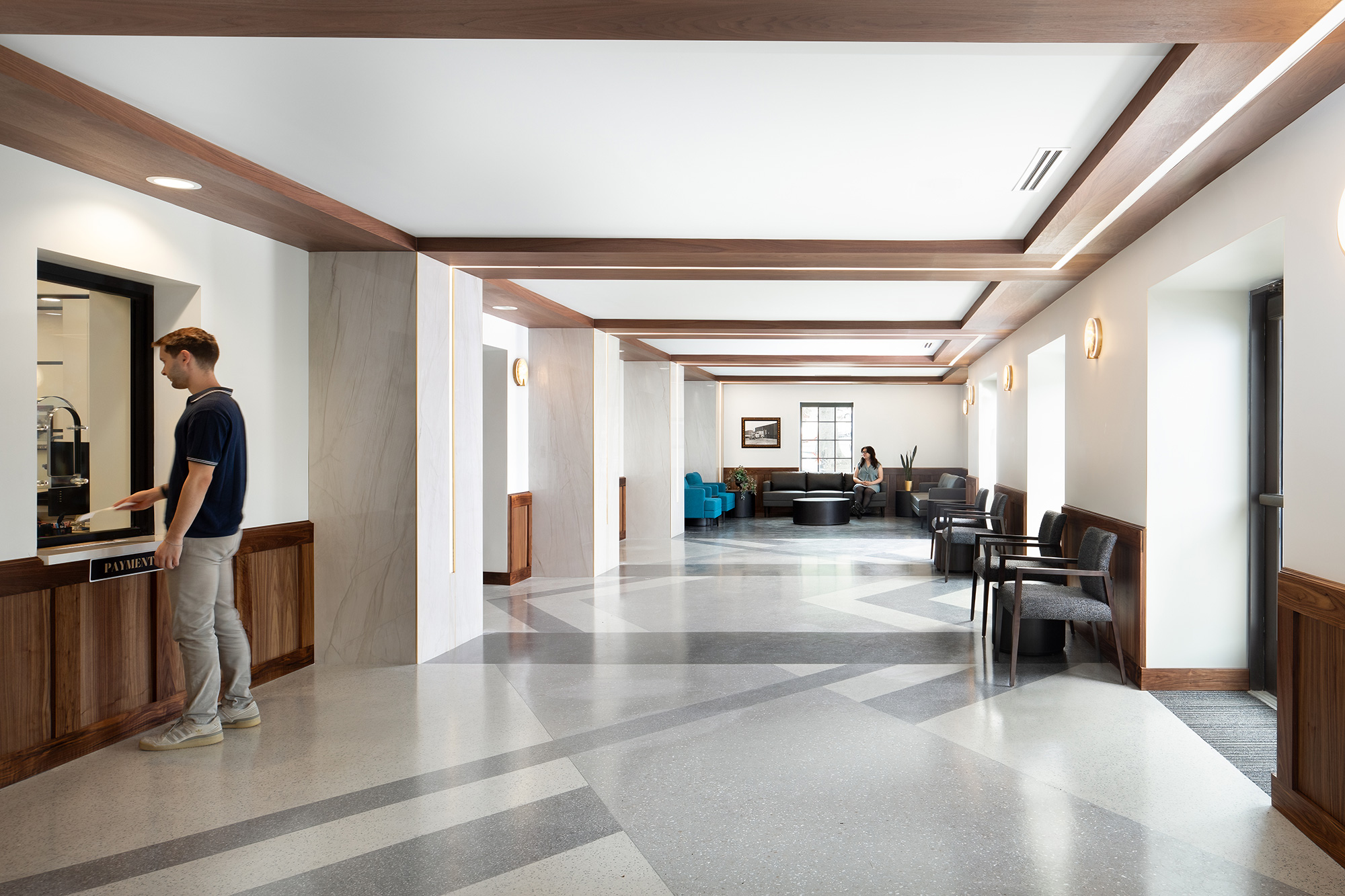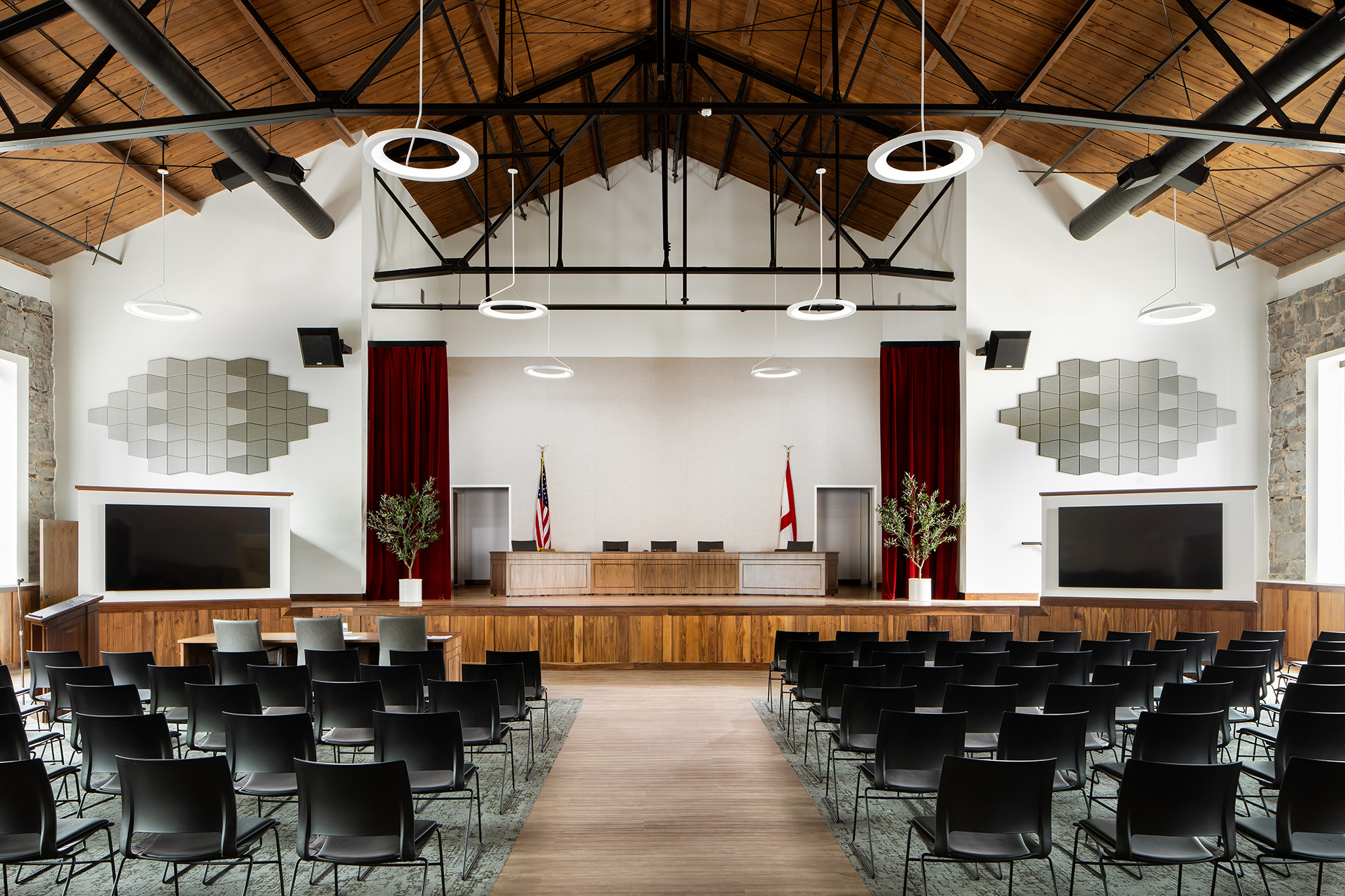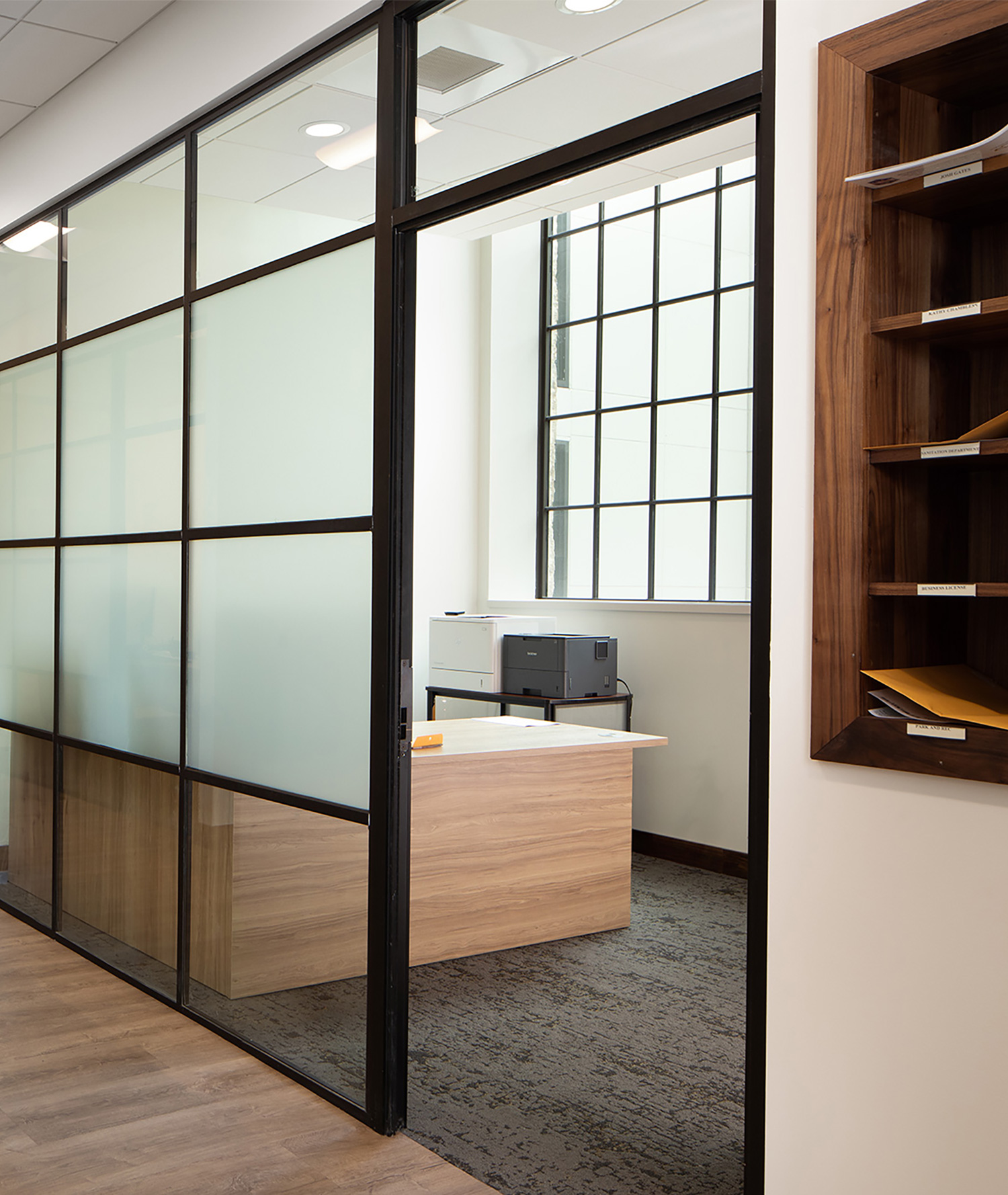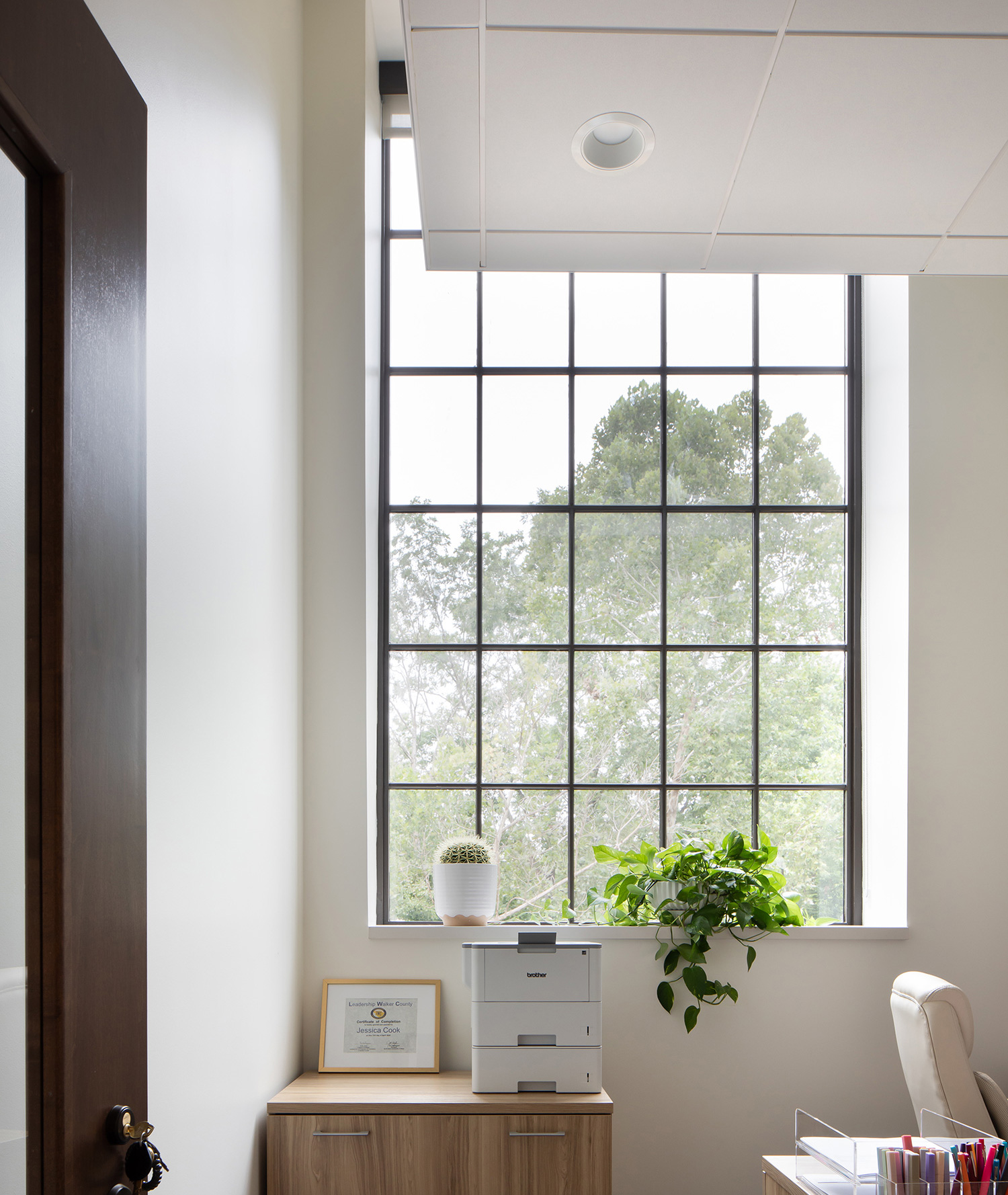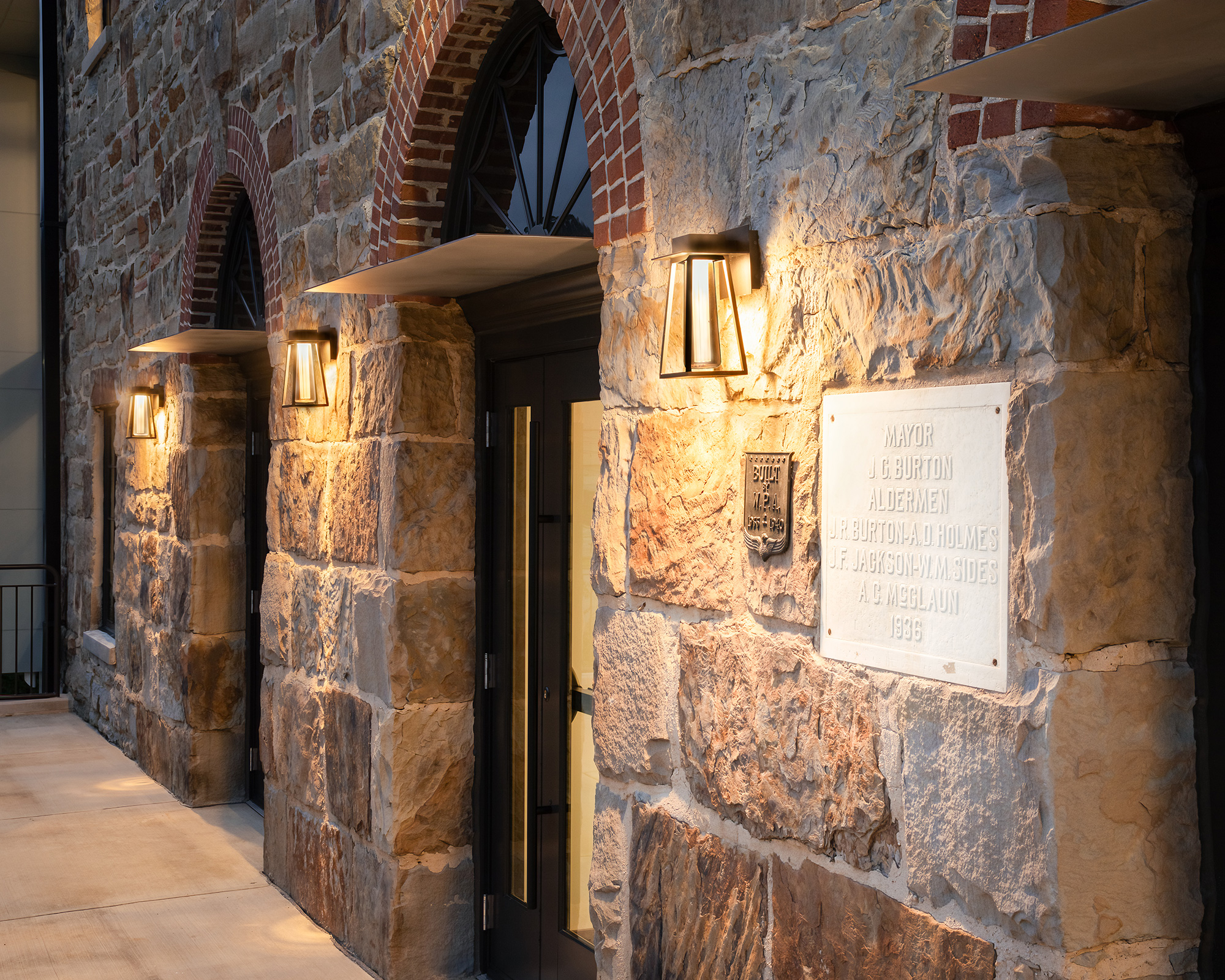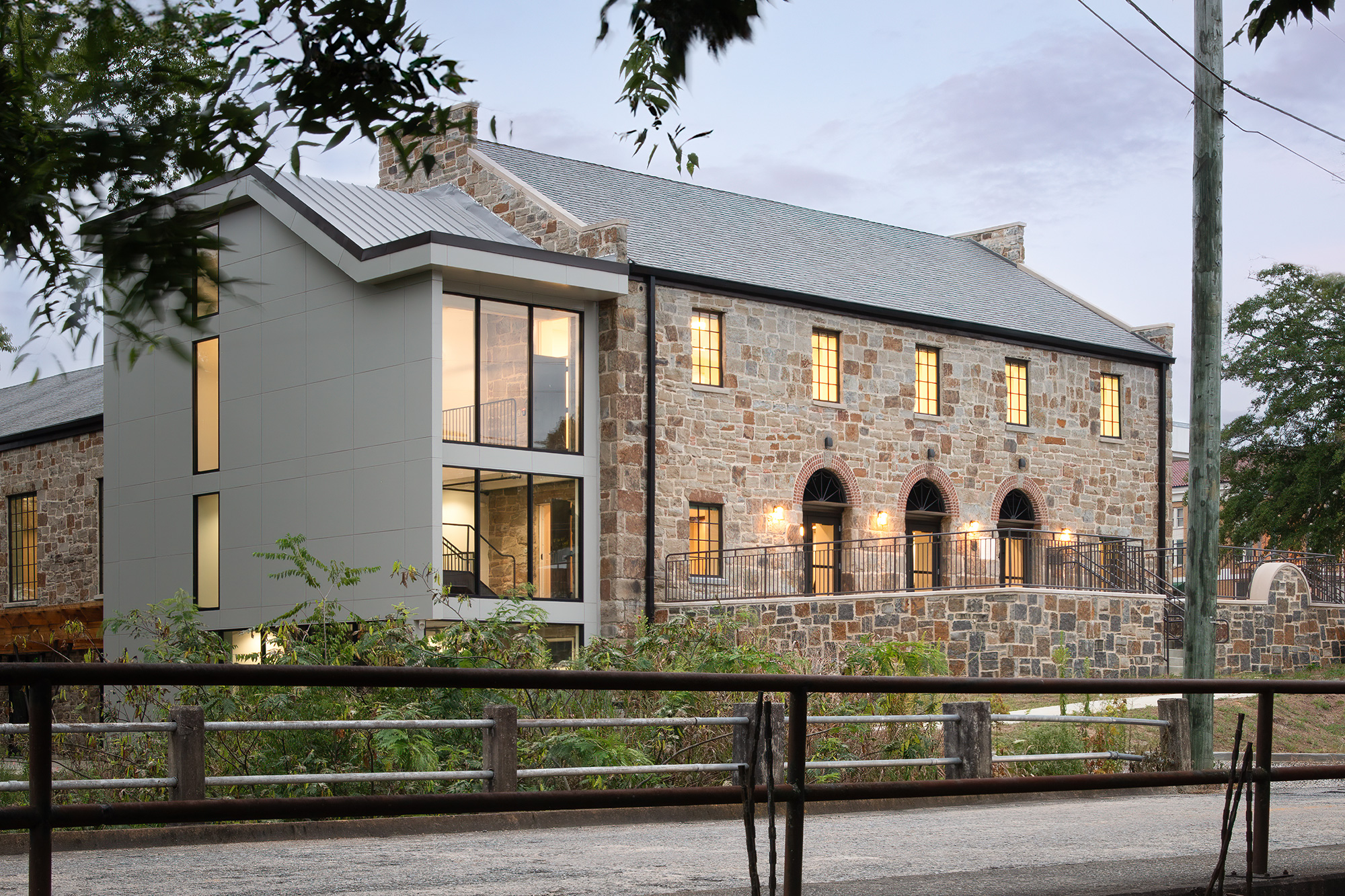Working with a local quarry, the design team restored damaged or missing portions of the historic stone exterior while preserving the architectural integrity of the original WPA construction.
Due to evolving codes and programmatic requirements for improved circulation and access, a new tower addition provides ADA-compliant vertical movement and secondary egress.




